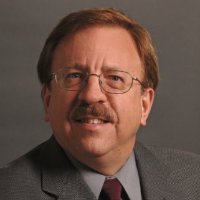Candidate imager architectures for sustainable land imaging

Ongoing NASA funded research in sustainable land imaging technology offers the promise for simpler, more capable imagers that would also be much smaller and lighter than current and past systems. This new land imaging technology combined with related technology funded by industry and other government agencies enables new full spectrum and disaggregated push broom and whiskbroom imager architectures. This seminar considers how emerging requirements for Landsat 10 and beyond impact candidate imager architectures for sustainable land imaging.
Date and Time
Location
Hosts
Registration
-
 Add Event to Calendar
Add Event to Calendar
- RIT
- 54 Lomb Memorial Drive
- Rochester, New York
- United States 14623
- Building: 76-Chester F. Carlson Center for Imaging Science
- Room Number: 1125
- Click here for Map
Speakers
 Jeffery J. Puschell
Jeffery J. Puschell
Candidate imager architectures for sustainable land imaging
Ongoing NASA funded research in sustainable land imaging technology offers the promise for simpler, more capable imagers that would also be much smaller and lighter than current and past systems. This new land imaging technology combined with related technology funded by
industry and other government agencies enables new full spectrum and disaggregated push broom and whiskbroom imager architectures. This seminar considers how emerging requirements for Landsat 10 and beyond impact candidate imager architectures for sustainable land imaging.
Biography:
Dr. Jeff Puschell is Principal Engineering Fellow at Raytheon Space and Airborne Systems in El Segundo, California. He is an internationally recognized expert in the system engineering of space-based imaging and remote sensing systems. His 30+ years of experience is broadly based and includes leading and making major contributions toward development of visibleinfrared instruments for space-based operational environmental remote sensing, development and field testing of laserbased communication and remote sensing systems and building and using millimeter, infrared, visible and ultraviolet wavelength instrumentation for ground-based astronomy.
He has been Chief Engineer, Chief Scientist or Technical Director for more than a dozen major projects in spacebased remote sensing and laser-based communication/remote sensing systems. He has served on many advisory boards including the NASA PACE Science Definition Team, the Department of Commerce Emerging Technology and Research Advisory Committee, the AMS Satellite Meteorology and Oceanography Committee and the IEEE Geoscience and Remote Sensing Society (GRSS) Industry Group and Steering Committee along with
many NASA, NSF and DARPA review panels.
Dr. Puschell has authored or coauthored 130+ papers on a variety of topics in astrophysics, imaging, remote sensing and optical communication. He is co-editor and co-author for the leading reference book Space Mission Engineering: The New SMAD. He holds patents for innovative passive and active remote sensors. He participates actively in technical societies such as the SPIE and AIAA. He currently chairs the AIAA Los Angeles-Las Vegas Section and he is a Deputy Director for the AIAA Space and Missiles Group. He chaired the AIAA Space Systems Technical Committee (SSTC) in 2009-2010 and the AIAA Los Angeles-Las Vegas Section in 2012-2013. He was AIAA SPACE 2014 Forum General Chair. He is Associate Editor of the SPIE Journal of Applied Remote Sensing and Chair for the SPIE Remote Sensing System Engineering Conference.
Dr. Puschell is actively involved with universities as a member of the Visiting Committee for the Physical Sciences and Chair of Team Astro at the University of Chicago along with being member and past chair of the External Advisory Board for the NOAA CREST Institute at City College of New York. He was Raytheon Professor of Practice at Cal Poly San Luis Obispo in 2011-2012 and he chaired the Industrial Advisory Board for the NSF Center for Metamaterials in 2010-2012.
Dr. Puschell received an A.B. (with Honors) degree in Physics from the University of Chicago in 1975 and a Ph.D. in Astrophysics from the University of Minnesota in 1979. He is a SPIE Fellow and a Fellow of the AIAA. He and his wife Dana live in Solvang and Hermosa Beach,
California.
Address:El Segundo, California, United States, 90245
Jeffery J. Puschell
Candidate imager architectures for sustainable land imaging
Biography:
Address:El Segundo, California, United States

